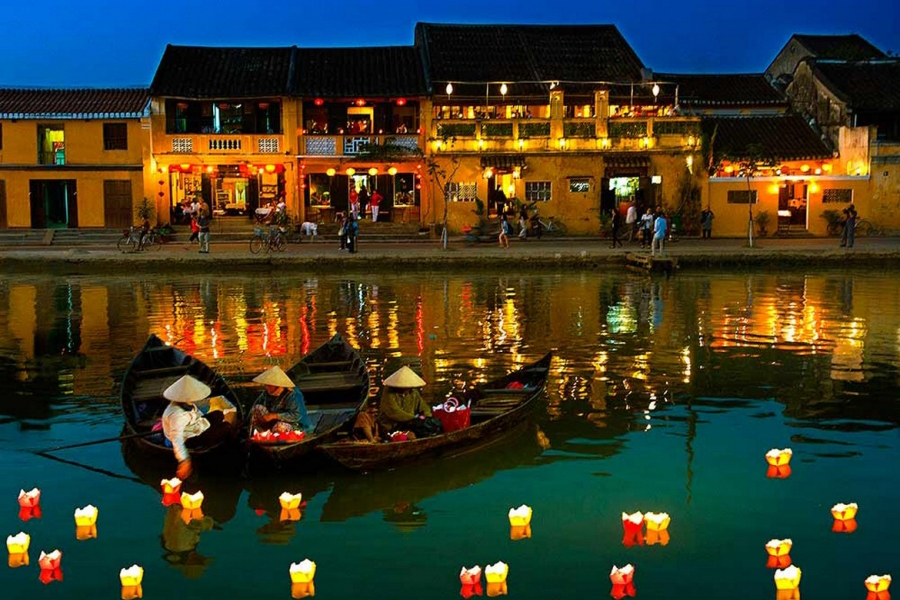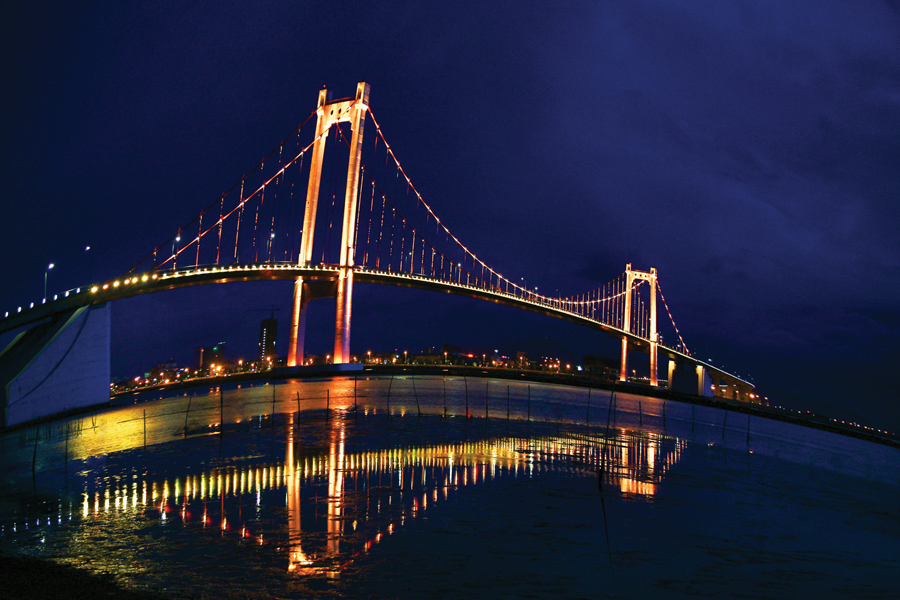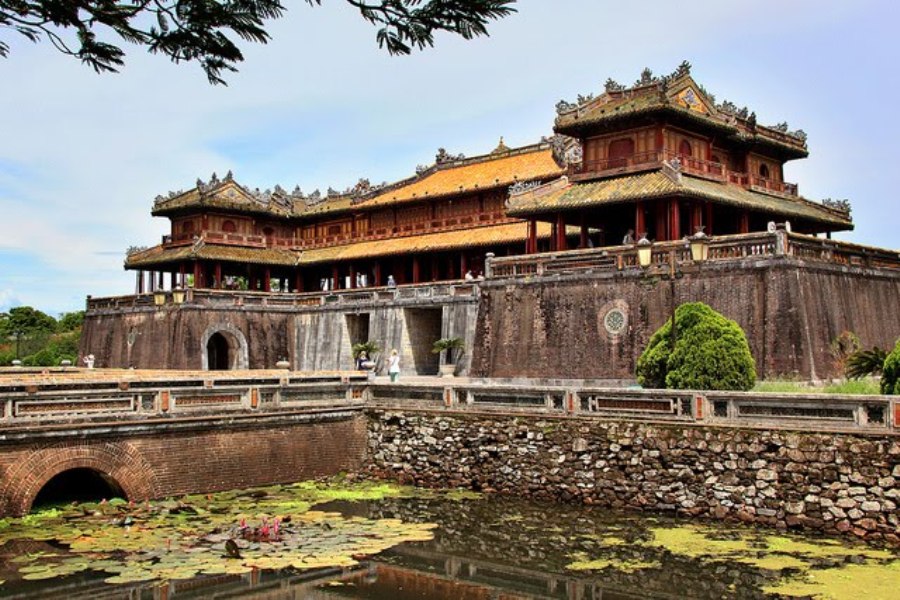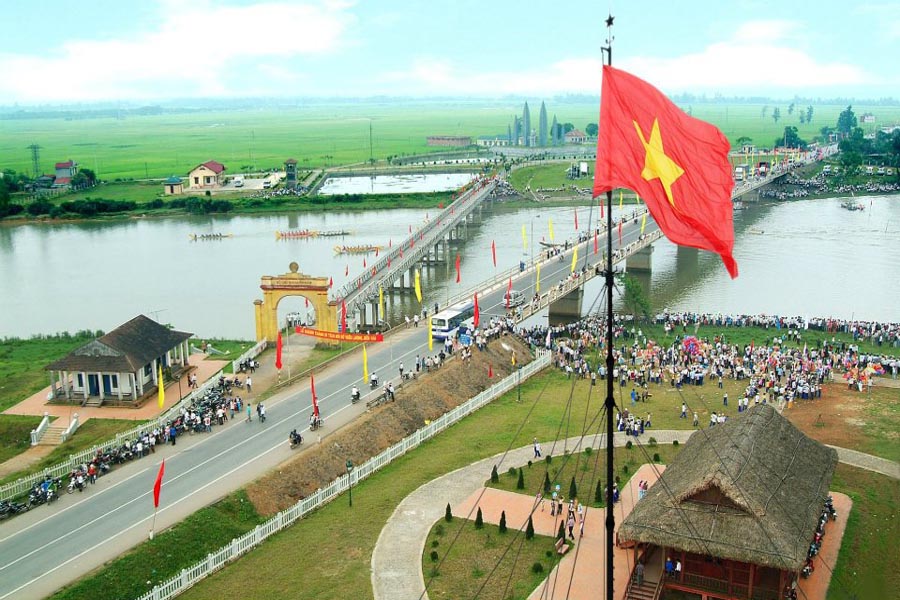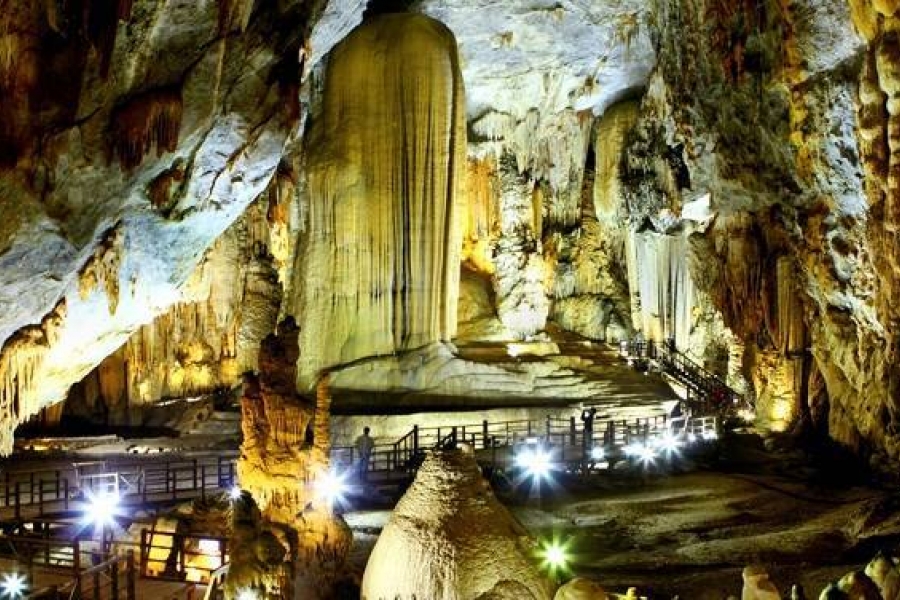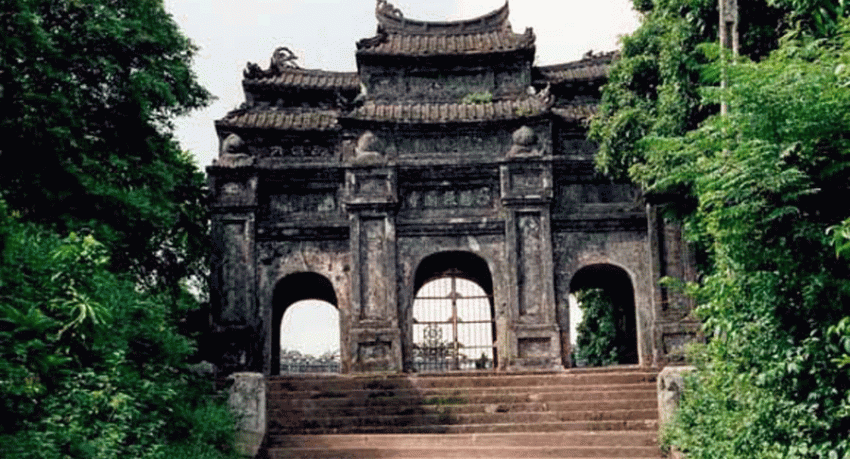Bao Quoc Pagoda wasfounded by the venerable Giac Phong towards theend ofthe 17th century. It was originally called Ham Long Thien Tho tu Pagoda, after the hill on which it stands. The pagoda islocated in Phuong Duc district, close to the centre of hue, and is bordered by Dien Bien Phu street on the east, Lich Doi village on the west, the Hue railway station on the north, and Truong Giang village on the south.
The pagoda was originally only small shrine, and was gradually enlarged over the years. In 1749 Lord Nguyen Phuc Khoat granted the pagoda a gilt board engraved with the words “Sac tu Bao Quoc tu” and “Quoc Vuong tu te Dao Nhan Ngu De”. In Tay Son times, Kinh Quang Trung used the pagoda as a warehouse for soda and workshop to make bullets and cast guns and other weapons. In 1808 qeen Hieu Khuong raised money to renovate and enlarge the pagoda, which was then renamed Thien Tho Tu. Emperor Minh Mang changed the pagoda’s, name back to Bao Quoc in 1824. Funds for further renovation were provided by emperor Tu Duc in 1858.By 1957 the pagoda had been so damaged by termites that the Board of Management ofpagoda and Temples ordered a total rebuilding. Its original architectural style was preserved, but reinforced concrete columns and beams replaced the old wooden ones.
Bao Quoc Pagoda is known for its beautiful landscaping and also for its historical relics. Ham Long Well to the north of the pagoda is 4.5 meters deep. The water here is clear and fresh. It is said that the water from this well was given the name Forbidden Wall. At the bottom of the the well there is a stone in the shape of a dragon’s head from which water flows into the well. Ham Long well has entered Hue folk verses:
Ham Long water is pure and fresh.
The Buddha has nlessed my love for you.
In the pagoda are many couplets and other inscriptions on gilt boards from the time of Lord Nguyen Phuc Khoat (1737 – 1765), a bell cast in the 7th year of the regin of Emperor Gia Long (1808), an altar for Queen Hieu Khuong,and a twisted tree root in the shape of a person.
In 1940, the Buddhist College was opened in Bao Quoc Pagoda, with the late Venerable Thich Tinh Khiet as rector. In 1948, son Mon Buddhist School was moved to Bao Quoc hasbeen a centre for, the training of Buddhist monks.
The pagoda suffered considerable damaged during the war. The venerable Thich Tri Thu was responsible for its restoration. He was at the same time the rector of the Buddhist College and the superior of the pagoda.
Copyright by Phong Nha Pioneer Travel
Categories: Blog
